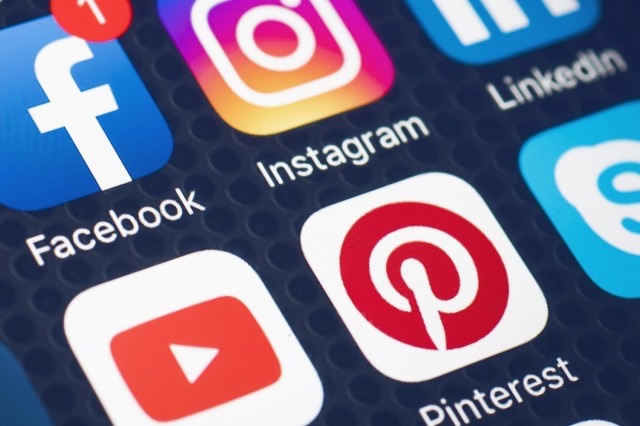WASHINGTON — The Defense Department today released a policy that for the first time spells out, from the highest levels of the defense community, how DOD military and civilian personnel should use official social media accounts to best advance the mission of the U.S. military and further instill trust in the credibility of the DOD.
DOD Instruction 5400.17, titled “Official Use of Social Media for Public Affairs Purposes,” provides principles for social media use within DOD, direction regarding records management procedures for social media accounts, and guidance to ensure personal social media accounts are not misrepresented or misinterpreted as official accounts.

While some of the military services and other agencies published social media policies years ago, DODI 5400.17 is the department’s first instruction that provided Pentagon-level, departmentwide guidance that specifically addresses the use of social media.?The DOD chief information officer previously issued DODI 8170.01, “Online Information Management and Electronic Messaging,” to provide broad policy guidance on the secure and appropriate use of social media. The new policy specifically addresses public affairs uses and responsibilities.
“It’s long overdue,” Andy Oare, director of digital media for the Office of the Secretary of Defense, said. “There have been efforts in the past to do this, but in an organization of this size and magnitude, you need to fully coordinate and ensure all viewpoints are heard and represented. We wanted to make sure the services were collaborators from the very beginning.”
Because social media changes rapidly, Oare said policies that the department may have started developing in the past but had never finalized would quickly show their age. That won’t happen with the newly published instruction, and he stressed that this policy will be continually refined and updated based on the evolving social media landscape.
“We’ll work across the department to be agile and responsive in our day-to-day operations as we implement this policy and update it where and when we should,” Oare said.
“Social media has an effect on every one of our service members, civilians, contractors and their families — whether they run an official account or have never heard of Twitter,” Oare said. “We owe it to all of them to have one central policy that provides a clearly articulated standard of operation and accountability.”
The DOD social media policy applies to Office of the Secretary of Defense personnel, the military departments, the Office of the Chairman of the Joint Chiefs of Staff and the Joint Staff, the combatant commands, and other DOD offices and agencies.?In some cases, this means the new policy will supersede preexisting social media policies, but close coordination throughout its development ensured that all perspectives were considered and integrated.
“We deliberately wrote it in a collaborative manner, and it encourages component heads to continue establishing component-specific social media regulations,” Oare said. “Our aim is not to be prescriptive or restrictive, but rather to lay out some commonsense rules that simply have not been formally articulated at this level.”
In addition to detailing the roles and responsibilities of DOD leadership in enforcing responsible social media practices, the new policy offers guidance to department personnel who generate content on official social media platforms to ensure responsible use of the medium, key elements to consider when establishing a new presence or expanding into new platforms, and on the authority to close unused accounts.
“If social media is mismanaged or mishandled, the U.S. government’s reputation with the American public; relationships with interagency, international, state, local and tribal entities; military operations; and reputation for a high ethical and professional standard may be compromised,” the policy warns social media practitioners.
The guidance in DODI 5400.17 is meant to ensure DOD’s credibility and avoid controversy, while using social media to share its missions with the public, Oare said.
“In a digital world where lines of truth and authenticity are so often blurred, it’s important that institutions like us have trusted, verifiable and reliable presences,” Oare said. “We have a duty to the American people to show the work we’re doing, to tell the story of our service members, and to present that information though channels they use in their daily lives.”
By C. Todd Lopez, DOD News


Is this why Mike Jones AKA GARAND THUMB Left the Air Force?
I’m betting no. First, a policy released today, that has to do with PA creates two conditions, one being it came out after he left, the other being he wasn’t in Public Affairs, so this policy isn’t about him. Also, based on the hits he gets on YouTube, he’s probably a multimillionaire, and is definitely a successful entrepreneur. My bet is he makes more outside the military than he made in it, and staying in would be less beneficial for him. Lastly, I didn’t know he got out, more power to him, guy is crushing it after years of putting in work, and putting out great content. Hats off to you, Mike.
No. IIRC, he was medically separated because his back got fucked up on a jump.
My understanding is that he med boarded out. He just got a commission so he had to have time left on his contract.